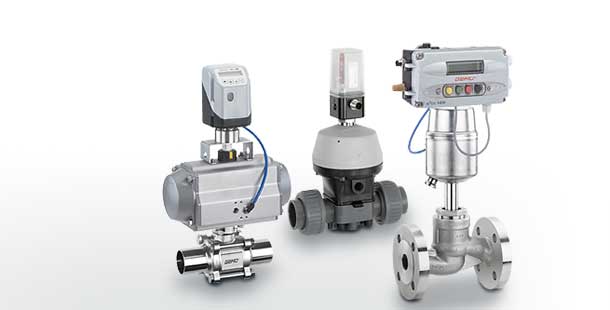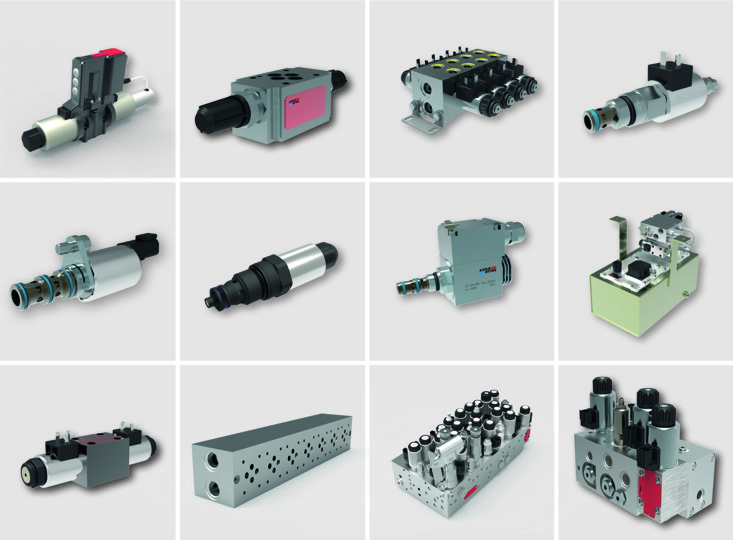Cutting-edge Control Valves: Enhancing Precision and Reliability
Cutting-edge Control Valves: Enhancing Precision and Reliability
Blog Article

Maximize Power Financial Savings and Convenience With Advanced Structure Automation Controls
In the world of contemporary design and facility administration, the integration of sophisticated building automation manages stands as a critical advancement. The convergence of innovation and sustainability has actually birthed a new era where energy performance, comfort optimization, and functional streamlining are no more attainable truths yet far-off ambitions. By taking advantage of the power of automation, structures can adapt, react, and evolve in manner ins which were when unbelievable. The possibility for considerable power cost savings and enhanced comfort is not just a possibility however a guarantee waiting to be met. This standard change in structure monitoring holds the vital to unlocking a globe where environmental conscientiousness and owner well-being harmoniously exist side-by-side within the wall surfaces of our frameworks.
Energy Effectiveness Conveniences
Energy efficiency benefits can considerably decrease energy usage and functional costs in buildings. By carrying out energy-efficient techniques and modern technologies, building proprietors and operators can attain substantial savings while also adding to environmental sustainability. One of the primary advantages of improving energy performance in structures is the reduction of energy bills. Energy-efficient systems, such as advanced structure automation controls, can maximize making use of resources like heating, lights, and air conditioning, leading to lower power expenses gradually.
Furthermore, boosted power performance can prolong the life-span of building tools and systems. By operating much more effectively, HVAC systems, light, and other structure elements experience much less deterioration, leading to decreased maintenance and substitute prices. In addition, energy-efficient structures commonly regulate greater building worths and rental prices, supplying long-term financial benefits to proprietors.
In addition, power performance can boost passenger comfort and performance. Correctly controlled indoor settings with ideal illumination and thermal conditions develop a more conducive and pleasurable work area, resulting in boosted staff member fulfillment and performance. In general, the power performance benefits linked with innovative structure automation controls are multifaceted, encompassing price financial savings, environmental stewardship, and resident wellness.
Enhanced Convenience Control
Enhancing comfort control in structure settings needs an innovative combination of advanced automation systems for optimum occupant well-being. By utilizing advanced structure automation controls, centers can customize the interior environment to meet the specific needs and preferences of passengers. These systems make it possible for accurate policy of temperature level, air flow, and lights, developing a productive and comfortable atmosphere. Resident contentment and productivity are carefully linked to thermal convenience, making it necessary to have systems in place that can adapt to altering conditions in real-time.
By incorporating these advanced controls, structures can not just enhance comfort yet likewise improve energy efficiency by optimizing system procedures based on real tenancy and use patterns. Eventually, focusing on occupant comfort through innovative automation systems leads to an extra enjoyable and much healthier interior setting.
Functional Performance Improvements

Additionally, the execution of real-time monitoring and analytics devices allows building operators to recognize power inefficiencies and operational abnormalities quickly. By continually checking energy usage patterns and system efficiency metrics, adjustments can be made in real-time to optimize power consumption and guarantee peak functional effectiveness. control valves. In addition, integrating demand reaction methods into building automation controls can further boost functional performance by dynamically changing energy usage based upon grid conditions and prices signals
Indoor Climate Optimization
Efficient interior climate optimization is a basic element of structure automation controls, making certain owners' convenience and wellness while maximizing energy cost savings. By using sophisticated sensing units and controls, building automation systems can constantly keep an eye on and change temperature level, moisture levels, air quality, and air flow to produce an ideal indoor atmosphere. Preserving consistent and comfortable conditions not just boosts resident fulfillment however additionally increases efficiency and general wellness.
Indoor environment optimization likewise plays a critical function in energy effectiveness. By fine-tuning heating, ventilation, and air conditioning systems based on real-time information and tenancy patterns, constructing automation controls can significantly minimize energy consumption - control valves. For circumstances, applying strategies such as demand-controlled ventilation and thermal zoning can aid reduce power waste while making certain that each area of the building obtains the needed conditioning.

Sustainable Setting Production
Structure automation regulates not just maximize indoor climate problems for power efficiency and owner comfort but additionally lay the structure for developing a lasting environment through critical administration of resources and systems. By incorporating advanced structure automation innovations, such as sensing units, actuators, and smart software program, facilities can change and keep an eye on energy use in real-time to lessen waste and reduce their carbon footprint. These systems make it possible for anticipating maintenance, identifying potential concerns before they rise and enhancing devices performance to improve longevity and effectiveness.
Moreover, lasting atmosphere production expands past energy monitoring to incorporate water preservation, waste decrease, and interior air quality enhancement. Building automation controls can manage water usage, discover leakages, and ensure appropriate garbage disposal techniques, adding to total sustainability initiatives. Furthermore, by checking and managing air flow and filtration systems, these technologies enhance passenger health and wellness and performance while decreasing power usage related to a/c operations.
Final Thought
Finally, progressed structure automation regulates deal substantial benefits in terms of power cost savings, convenience control, operational effectiveness, interior climate optimization, and developing a lasting setting. By carrying out these controls, structures can accomplish optimal efficiency More hints while lowering energy intake and enhancing passenger comfort. It appears that making use of innovative automation innovation is important in improving structure efficiency and creating a why not find out more much more lasting future.
Energy efficiency advantages can considerably reduce energy usage and operational prices in structures. In general, the energy performance advantages associated with innovative structure automation controls are multifaceted, incorporating expense savings, environmental stewardship, and occupant wellness.
Additionally, including demand response methods into structure automation controls can additionally improve functional performance by dynamically changing power use based on grid problems and prices signals.
Building automation manages not only maximize interior environment conditions for energy performance and owner comfort but also lay the structure for producing a lasting setting through calculated monitoring of systems and sources.In conclusion, advanced building automation manages official statement deal substantial benefits in terms of power cost savings, comfort control, functional efficiency, interior environment optimization, and producing a lasting setting.
Report this page